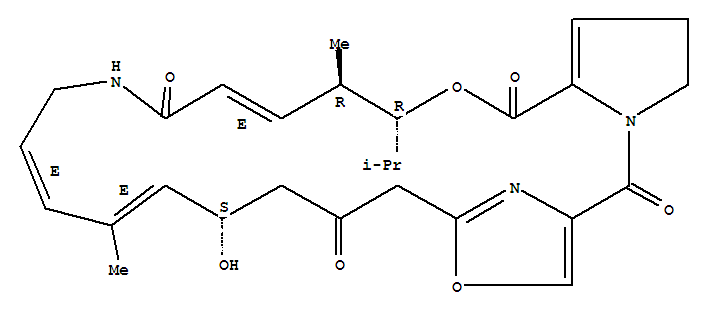Technology Process of CID 16220095
There total 16 articles about CID 16220095 which
guide to synthetic route it.
The literature collected by LookChem mainly comes from the sharing of users and the free literature resources found by Internet computing technology. We keep the original model of the professional version of literature to make it easier and faster for users to retrieve and use. At the same time, we analyze and calculate the most feasible synthesis route with the highest yield for your reference as below:
synthetic route:
- Guidance literature:
-
With
1H-imidazole hydrochloride; tetrabutyl ammonium fluoride;
In
tetrahydrofuran;
for 12h;
- Guidance literature:
-
With
water;
In
aq. phosphate buffer; dimethyl sulfoxide;
at 37 ℃;
for 24h;
pH=7.4;
pH-value;
DOI:10.1128/AAC.03389-14
- Guidance literature:
-
Multi-step reaction with 5 steps
1.1: hexane; tetrahydrofuran / 0.75 h / -78 °C / Inert atmosphere; Sealed tube
1.2: 1 h / -78 °C / Inert atmosphere; Sealed tube
2.1: 1-chloro-1-(dimethylamino)-2-methyl-1-propene / dichloromethane / 2.08 h / 23 °C / Inert atmosphere; Sealed tube
3.1: 2,6-dimethylpyridine / dichloromethane / 23 °C / Inert atmosphere; Sealed tube
4.1: tris-(dibenzylideneacetone)dipalladium(0); bis(3,5-bis(trifluoromethyl)phenyl)(2’,4’,6’-triisopropyl-3,6-dimethoxy-[1,1’-biphenyl]-2-yl)phosphine / toluene / 24.5 h / 80 °C / Inert atmosphere; Sealed tube
5.1: Imidazole hydrochloride; tetrabutyl ammonium fluoride / tetrahydrofuran / 12 h / 23 °C / Inert atmosphere; Sealed tube
With
2,6-dimethylpyridine; tris-(dibenzylideneacetone)dipalladium(0); 1-chloro-1-(dimethylamino)-2-methyl-1-propene; bis(3,5-bis(trifluoromethyl)phenyl)(2’,4’,6’-triisopropyl-3,6-dimethoxy-[1,1’-biphenyl]-2-yl)phosphine; tetrabutyl ammonium fluoride; Imidazole hydrochloride;
In
tetrahydrofuran; hexane; dichloromethane; toluene;
4.1: |Stille Cross Coupling;
DOI:10.1021/jacs.7b08577






